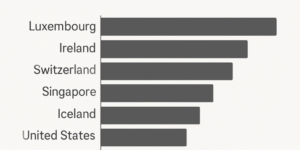Compensation and benefits are integral components of human resource management, playing a pivotal role in the attraction, retention, and motivation of employees. According to Milkovich and Newman (2016), competitive compensation packages are essential not only for employee satisfaction and engagement but also for influencing the overall performance of the organisation. In an increasingly competitive labour market, organisations must invest in well-structured compensation and benefits systems to sustain high levels of performance and retain skilled talent.
1.0 Compensation: A Core HR Function
Compensation refers to the monetary rewards that employees receive in exchange for their work and includes salary, bonuses, and other financial incentives. It is a central component of human resource strategy as it directly impacts the recruitment process, employee motivation, and turnover rates (Armstrong and Taylor, 2020). When employees perceive their compensation to be fair and competitive relative to the market, they are more likely to remain with the organisation, reducing turnover costs and ensuring the retention of valuable talent. Conversely, organisations that fail to offer competitive compensation packages risk losing top employees to competitors, which can be detrimental to long-term organisational performance (Armstrong, 2017).
According to the WorldatWork Compensation Basics (2021), compensation can be categorised into direct and indirect compensation. Direct compensation includes base pay, bonuses, and commission, while indirect compensation refers to non-monetary benefits such as retirement plans, health insurance, and paid leave. Direct compensation is often seen as the most significant factor in attracting employees, but indirect compensation also plays a crucial role in enhancing job satisfaction and employee engagement (Milkovich and Newman, 2016).
2.0 The Role of Benefits in Employee Retention
In addition to direct financial rewards, organisations offer a range of non-financial benefits to employees. Benefits may include health insurance, pension plans, paid time off, and flexible working arrangements. According to the Chartered Institute of Personnel and Development (CIPD, 2022), employee benefits are increasingly seen as a way to differentiate an organisation from its competitors. Providing comprehensive benefits can improve employee well-being, increase loyalty, and enhance organisational commitment, contributing to lower turnover rates.
Benefits packages are particularly valuable in industries where the workforce is highly skilled or where competition for talent is intense. For example, in the technology sector, offering benefits such as remote working opportunities, wellness programmes, and career development opportunities has become a norm for retaining talent (Bennett, 2019). These benefits contribute to an improved work-life balance, which is a key factor in enhancing employee satisfaction. Employees who enjoy a good work-life balance are more productive, less stressed, and more engaged in their work, ultimately benefiting the organisation’s bottom line (Kaufman, 2020).
3.0 Strategic Alignment of Compensation and Benefits
Aligning compensation and benefits with organisational strategy is essential for ensuring that they effectively contribute to achieving business objectives. Armstrong and Taylor (2020) argue that organisations must design their compensation and benefits systems to support both the organisation’s goals and employee needs. This requires an understanding of market trends, internal equity, and employee expectations. According to the Mercer Global Talent Trends Study (2021), the most successful organisations are those that constantly review their compensation strategies in line with changes in the labour market and adjust their benefits offerings to reflect the evolving needs of their workforce.
Furthermore, offering performance-related compensation can help align employee efforts with organisational goals. By linking rewards such as bonuses and promotions to performance metrics, companies can incentivise employees to work towards key business outcomes. Research shows that performance-related pay can lead to higher productivity, as employees are more likely to be motivated when they know their efforts will be rewarded (Kaufman, 2020).
4.0 The Importance of Equity in Compensation
Equity and fairness are crucial in determining how employees perceive their compensation and benefits. According to Milkovich and Newman (2016), perceived inequities in compensation can lead to dissatisfaction, decreased motivation, and increased turnover. The equity theory of motivation suggests that employees compare their input-output ratios with those of their colleagues, and any perceived imbalance may result in reduced productivity or higher absenteeism (Armstrong, 2017).
In recent years, the concept of pay equity has gained prominence, with many organisations conducting regular audits to ensure that employees are paid fairly regardless of gender, race, or other factors. According to the World Economic Forum (2021), organisations that prioritise pay equity are more likely to foster an inclusive and motivated workforce, which in turn drives better business performance.
Compensation and benefits are critical for attracting, retaining, and motivating employees. A well-designed compensation and benefits strategy can significantly improve organisational performance by fostering employee satisfaction and engagement. As organisations continue to compete for top talent in a globalised and dynamic labour market, compensation and benefits will remain at the forefront of human resource management. Ensuring that these packages are competitive, equitable, and aligned with business goals is essential for long-term success.
References:
Armstrong, M. (2017) Armstrong’s Handbook of Reward Management Practice: Improving Performance through Reward. 5th ed. Kogan Page.
Armstrong, M., and Taylor, S. (2020) Armstrong’s Handbook of Human Resource Management Practice. 15th ed. Kogan Page.
Bennett, M. (2019) “The Value of Non-Financial Benefits in the Workplace”. Journal of Business Management. 35(3), pp. 45-59.
Chartered Institute of Personnel and Development (CIPD) (2022) “Employee Benefits”. [Online]. Available at: www.cipd.co.uk [Accessed on 8 September 2024].
Kaufman, B. (2020) “Pay for Performance: Linking Compensation to Employee Productivity”. Journal of Compensation and Benefits. 40(2), pp. 22-31.
Mercer Global Talent Trends Study (2021) Adapting to the Future of Work. [Online]. Available at: www.mercer.com [Accessed 8 September 2024].
Milkovich, G.T., and Newman, J.M. (2016) Compensation. 12th ed. McGraw-Hill.
World Economic Forum (2021) “Pay Equity and the Future of Work”. [Online]. Available at: www.weforum.org. [Accessed 0n 8 September 2024].
WorldatWork (2021) Compensation Basics: A Primer for HR Professionals. WorldatWork Press.









